2017 VR Industry Predictions, Revisited
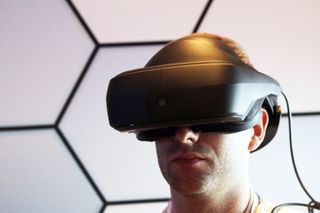
At the beginning of 2017, we looked at the future of VR and what the industry might bring during the year and spoke with a variety of leaders in the VR software and hardware industries. As another new year rolls around, we revisited those predictions for the year to see how many came to pass.
The Year Of VR Software
Late in 2016, the virtual reality market was about to experience its first holiday season. The HTC Vive was selling for $800, and the Oculus Touch controllers had just hit the market, which brought the Rift’s price tag (and capabilities) into direct competition with the Vive. Sony’s PlayStation VR system was available, but hard to find, and Sony wasn’t putting much effort into marketing the hardware at that time.

VR headsets were also selling on their own merit—that is to say, there wasn’t much compelling software on the market yet. You could find a diamond in the rough, such as Arizona Sunshine or Raw Data, but the hit titles were few and far between. And some of the best VR games offered just a short experience. Critics and VR skeptics were calling out the lack of compelling software, but people working in the industry were confident that great content was just around the corner.
Jason Rubin, Head of Content at Oculus, said that “2017 is the year that software is really going to start taking off,” and as we look back on the year, we would have to agree. Several incredible games hit the market, and developers began to show what they can really achieve with virtual reality technology. 2017 also proved that big name publishers are taking VR seriously.
In January, Capcom released Resident Evil 7 with full support for Sony’s PlayStation VR headset and gave the world a glimpse of long-form VR gaming. RE7 doesn’t support motion controls, so it isn’t a true made-for-VR game, but it was a step in the right direction. In May, Ubisoft finally released Star Trek: Bridge Crew, which demonstrated the potential of working collaboratively in multiplayer VR games. Bridge Crew forces four players to work together to navigate a starship though the galaxy, and it proved to be one of the best experiences available for VR.

2017 also proved that it's possible to convert standard games to VR. Bethesda brought three of its beloved franchises to virtual reality near the tail end of the year, including Skyrim VR on PSVR, Fallout 4 VR for HTC Vive, and Doom VFR for both platforms. ID Software built Doom VFR from the ground up for VR, but Fallout 4 VR and Skyrim VR are conversions from the original games. Converting games is a risky move, but both titles have received great reviews from fans.
Croteam did its part in bringing solid content to VR platforms. The small developer continued what it started with last year’s Serious Sam VR: The Last Encounter and Serious Sam VR: The First Encounter and converted most of its back catalog, including, Serious Sam VR: The Second Encounter, Serious Sam 3 VR: BFG, and The Talos Principle VR.
Stay on the Cutting Edge
Join the experts who read Tom's Hardware for the inside track on enthusiast PC tech news — and have for over 25 years. We'll send breaking news and in-depth reviews of CPUs, GPUs, AI, maker hardware and more straight to your inbox.
Rockstar also dropped its name in the VR hat with a remake of LA: Noire that hit Steam VR in December.
Not Just Ported Games
The VR industry produced some incredible original content this year, too. In the Spring, Twisted Pixel and Oculus Studios released Wilson’s Heart, which set a new bar for realistic NPC characters. Twisted Pixel employed professional actors to bring life to the story, which is compelling and pulls you in to unravel the mystery.
One of the best titles of the year is Lone Echo from Ready at Dawn. The game features some of the best visuals found in any VR titles, and it offers a compelling, long-form story that you can sink several hours into. The developer also released a free eSports title called Echo Arena that borrows Lone Echo’s zero-gravity locomotion system.

Other notable 2017 VR releases include Sparc, The Mages Tale, Rick and Morty: Virtual Rickality, Killing Floor: Incursion, Artika.1, Duck Season, From Other Suns and Skyworld. If we tried to list every great VR game came out in 2017, we’d be here all day. Suffice it to say that Jason Rubin’s prediction came to pass, and it’s likely that 2018 will build on that trend.
We spoke with Rubin again recently, and he said that 2018 would be about quality over quantity. We can expect even better titles in the coming year, but fewer releases. Valve isn’t as organized as Oculus, but we suspect that SteamVR will remain open for indie developers, so we’ll likely still see a high volume of content releases on Valve’s platform.
Prices (Not Software) Drives Hardware Adoption
At the end of 2016, analysts were looking back at their overblown predictions for VR hardware adoption and revising their projections for 2017. Many people believed that Oculus would sell multiple millions of units and that HTC’s sales would be similar. In reality, the two companies combined hadn’t yet shipped 1 million units. Sony’s numbers weren’t publicized. Taken together, though, many believed that the industry was in trouble.
Simon Carless, one of the people in charge of GDC and VRDC, told us that he expected hardware adoption to remain slow, and in a way, he was right. VR headset sales are still below some of the overblown 2016 estimates, but VR adoption is on the rise. We still don’t have hard sales numbers from Oculus and HTC, but Sony recently revealed that it sold more than 2 million PSVR headsets ahead of the holidays. The numbers are still relatively low, but 2 million people is the beginning of a healthy user base. It wouldn’t be unreasonable to assume that Oculus and HTC are approaching the million-unit mark. (Microsoft’s Windows Mixed Reality platform surely attracted an influx of new VR adopters, too.)
Not everyone was worried about the sales volumes. Adoption of a new medium takes time, and the VR hardware market was facing a chicken-and-egg problem. Without compelling content, only true believers would have any reason to purchase hardware.
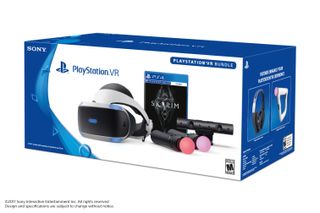
Rich Flier, Managing Director of Business Development at Digital Domain, believed that content would drive hardware adoption. We’re certain that the caliber of content that we’ve seen in recent months has pushed hardware sales. In fact, there’s evidence to suggest that Skyrim VR helped sell many PSVR units. Sony created a PSVR bundle package that includes a copy of Skyrim VR, and they flew off the shelves upon release.
However, we would suggest that cutting the prices of VR headsets did far more to bolster VR adoption than compelling content. On multiple occasions in 2017, Oculus demonstrated that slashing the price of the Rift gets people excited and compels people to take the plunge. In 2016, when Oculus launched the Rift, a headset would set you back $599, and it didn’t include motion controllers. By the end of that year, though, the company released the Touch controllers for $199. In March 2017, ahead of the anniversary of the Rift's release, Oculus made the bold move to dramatically reduce the price of the Rift headset and Touch controllers, and it instantly promoted sales. The Touch controllers became $99, and the Rift headset dropped to $499, which amounted to a $200 discount one year after the headset debuted.
This summer, Oculus cut the price even further as a temporary promotion. Suddenly, you could buy the Rift headset and Touch controllers for just $399. Following the promotion, Oculus announced that the Rift and Touch package would remain $399 going forward, though it discounted the headset (a bit) again for Black Friday and the holiday season.

HTC and Sony must have felt pressure from Oculus, because both companies reduced the asking prices for their VR systems. HTC cut the price of the Vive package from $799 to $599, and Sony dropped the PSVR bundle package from $499 to $449.
The new price points for each VR platform attracted a new round of consumers who were scared away from VR by the high launch prices. After each price cut, the Reddit communities for each platform exploded with excited newcomers. And judging by the post-Christmas chatter, the lower prices surely helped put VR headsets on the holiday shopping lists for many families.
We Were Wrong About Locomotion
2017 was a year of advancement and leaning for the VR industry, but it was also a year of realization--that what the development community thinks is best isn’t always correct.
Developers have been trying to solve motion sickness problems from locomotion since Day 1. Early VR development pioneers, such as Cloudhead Games, created alternative locomotion methods that provided a more comfortable experience, but they generally came with tradeoffs to immersion. Indeed, there are more than a dozen different locomotion methods for VR, such as teleportation or dash mechanics, but ironically, the one that developers tried to avoid has become one of the most in-demand. These days, most first-person VR games offer a smooth locomotion option--that is, a more traditional means of movement--despite the concerns of practically everyone that worked in the VR industry before the Vive and Rift hit the market. Even when a game doesn't offer smooth locomotion natively, the modding community comes to the rescue, such as with Payday 2 VR.
We would still recommend that newcomers start with a more comfortable locomotion method, but from the perspective of designers, it's never a good idea to fight with your customers, and the community of early-adopter VR enthusiasts made their voices loud and clear. They want smooth locomotion options, consequences be damned!
VR Locomotion is still far from a solved problem, and we encountered many new solutions throughout the year, including V-Move locomotion in Front Defense Heroes, Armswinger locomotion in Vindicta, and Head-Bobbing locomotion in Archiact's upcoming VR title, Evasion. However, if 2017 taught us anything about VR locomotion, it’s that the problem perhaps isn’t as serious as we once thought.
Accessories Enhance The VR Experience
A variety of accessories that upgrade your VR system and enhance the virtual experience emerged in 2017.
HTC revealed the Vive Tracker universal tracking device, which enables you to track almost anything in room-scale space. The company said that Vive Trackers and several accessories would be available in 2017, and to an extent, it lived up to that promise. Shortly after CES, HTC provided developers with tracking pucks so they could create content and hardware that would support the Trackers. Consumers had to wait until November to order Vive Trackers, and the first round of accessories hit the market in December.

Although we learned of the Vive Trackers first, Sony (and partner Impulse Gear) beat HTC to market with a purpose-built rifle motion controller for PSVR's Farpoint. The PSVR Aim Controller adds a new level of immersion in games that support it, too.
Wireless Headsets
The Vive Trackers weren’t the only accessories that HTC announced at CES. The company revealed that TPCast would bring its wireless Vive solution to the European and U.S. markets in 2017, which also came to pass. TPCast began accepting orders for the first U.S. market wireless modules in November. The company also opened pre-orders for a wireless module for the Oculus Rift in early December.
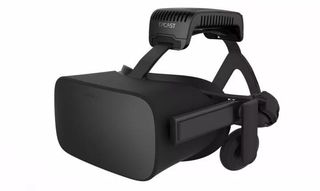
Several other companies announced wireless VR systems at CES, including KwikVR, DisplayLink, and Sixa, but none of the other technologies ever came to market. We have no idea what came of KwikVR (it went silent in January), and we’ve not heard from DisplayLink all year, but we have some insight on the fate of Intel and Sixa’s wireless solutions. Despite development being far enough along to send us a working prototype in the spring, Sixa returned the pre-order money that it collected for its Rivvr wireless solution because of complications that it couldn’t overcome within a reasonable timeframe. Perhaps we’ll see more from Sixa at CES 2018.
Intel is also developing a wireless solution for the HTC Vive based on its WiGig wireless technology that we expect to learn more about in the new year.
Next-Generation HMDs
It's hard to believe that we’re approaching two years with the same flagship hardware from HTC and Oculus; indeed, many believed we'd have gen-two HMDs by now. The lack of new HMDs, though, is perhaps not surprising given the relatively low (but growing) adoption rate, although it's worth noting that both companies threw resources into developing new technologies and products that complement or augment the existing HMDs.
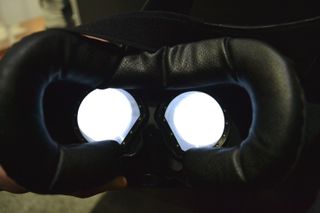
Going into 2017, we spoke with Lochlainn Wilson, Co-Founder, and CTO of Fove Inc. which is developing a second-generation VR HMD with integrated eye-tracking. Wilson believed that 2017 would “be the year that some technologies are introduced that will in hindsight come to be seen as absolutely crucial to the mainstream acceptance of VR.” He predicted that we’d see advancements in eye-tracking technology and the introduction of viable inside-out tracking solutions, and he believed that technologies that enable tether-free VR systems would be a big part of 2017.
For the most part, Wilson was right on the money. In March, SMI revealed a prototype HTC Vive headset with SMI eye tracking hardware embedded in it (Apple later acquired SMI and its eye-tracking technology portfolio). Tobii Tech also built eye-tracking hardware for the Vive headset.
Ironically, we’ve not heard much from Fove in 2017. The company shipped its developer kit headset in early 2017, and it regularly releases updates for its SDK, but Fove Inc. hasn’t discussed a consumer version of its VR headset with eye tracking.

Wilson didn't predict that wide-FOV HMDs would emerge this year, but we would classify the 200-degree FOV Pimax 8K VR headset as an example of next-generation VR technology. In September, Pimax launched a Kickstarter campaign to help fund the development of its dual 4K display VR headset. We tried the prototype at Immersed 2017, which was enough to leave us enthused to try the production model.
Ditching External Sensors
Wilson was also right about inside-out tracking technology. Camera-based SLAM Scan positional tracking solutions got much better in 2017, which opened the doors for AR to flourish. Apple and Google both released AR development kits that enable software developers to create AR experiences for everyday smartphones. The Apple ARKit and Android ARCore SDKs will serve as the foundation that helps AR burst into the mainstream.
Even the biggest players in the AR business want a piece of the inside-out action. Magic Leap snatched up Dacuda in February to integrate the company's breakthrough SLAM tracking tech into its upcoming headset. Following the Magic Leap acquisition, former Dacuda employees formed PXL Vision AG and created PXL Beam VR, which enables room-scale tracking on smartphones. Zeiss licensed the PXL Beam VR technology to enable Steam VR compatibility (via a tether to the PC) on its smartphone VR headset.
In October, Microsoft launched the Windows Mixed Reality platform, which comprises tethered VR headsets and the self-contained Hololens HMD. Microsoft partnered with Asus, Acer, Dell, Lenovo, LG, and Samsung to bring a variety of Windows MR headsets to market in the fall. The one thing that every Windows Mixed Reality device has in common is the tracking system: To qualify for Windows MR, the headset must incorporate the stereo camera and IR tracking system adapted from the Hololens.
Microsoft’s inside-out tracking system simplifies the setup process, which the company believes should encourage more people to adopt the platform, but the Windows MR headsets still require a host PC to operate. Moving around freely in a large open space is the true benefit of inside-out tracking, and for that you need an untethered device. Fortunately, such devices are just around the corner.
Standalone Headsets Are Coming In Quick
At the beginning of 2017, standalone VR headsets were somewhat of a pipe dream. We had seen and heard of a few prototypes, but no company had shown anything close to a consumer-ready product.
However, Thor Gunnarsson, co-founder and Head of Business Development at Sólfar Studios, told us last year that he believed standalone VR headsets would be one of the big stories of the year. He said he expected to see announcements about standalone headsets that deliver PS4-level performance by E3.
We’re not sure about the “PS4-level performance,” but Gunnarsson’s timeline ended up being a conservative guess. Just days after we spoke to him, Pico Technology announced the Pico Neo, a self-contained VR headset with internal orientation sensors and an external tracking system for six degrees of freedom (6DoF) tracking. The Pico Neo prototype featured a Qualcomm 820 SoC, but the company changed its plans after CES. Just this week, Pico revealed the revised Neo headset that includes cameras for inside-out tracking, motion controllers that feature ultra-sonic tracking technology, and an updated Qualcomm SoC.
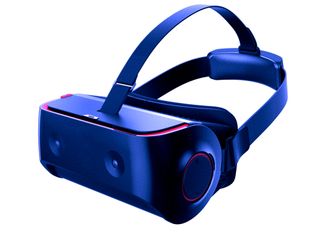
During CES, Qualcomm revealed its latest mobile SoC, the Snapdragon 835 VR, which features optimizations for virtual reality. It also revealed a standalone headset development kit, and announcements about headsets with Qualcomm’s new chip began to trickle out soon after the show.
In May, Google announced partnerships with HTC and Lenovo that would bring standalone Daydream headsets to the market in 2017. The standalone Daydream headsets were to include Snapdragon 835 VR SoCs and feature Google’s WorldSense inside-out stereo spatial tracking technology.
HTC was supposed to release the first standalone Daydream headset, but the company cancelled its agreement with Google and its headset for the U.S. marketplace. HTC went forward with a standalone VR headset, now called the Vive Focus, but it's available in China only.
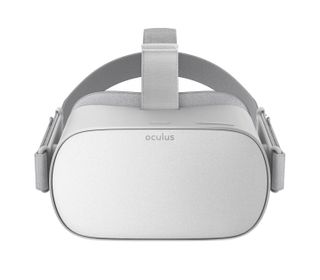
HTC and Google announced their standalone headsets early, but Oculus was one of the first players in this space. At Oculus Connect 3 last year, the company showcased a standalone headset called Project Santa Cruz. This year, at Oculus Connect 4, the company revealed a more refined version of the Santa Cruz headset, which is built on the Snapdragon 835 VR platform. Oculus wouldn’t reveal when Santa Cruz headset would be available, but it has another, less powerful standalone device coming in early 2018--the Oculus Go headset, which features a Qualcomm 821 SoC and runs on the Gear VR platform.
Cost is a big question around these standalone devices. Smartphone-based VR headsets are inexpensive because they borrow the processing hardware and display from your phone, but these untethered, standalone HMDs are built on what amounts to smartphone hardware. Thus, expect to pay commensurate prices to flagship smartphones when these mobile headsets hit the market. If the Pico Neo's $749 price tag is any indication, the upcoming crop of standalone headsets will serve a niche role and may not help promote VR to a wider audience.
On To Bigger & Better Things In 2018
This year, we (still) don’t expect to see replacements for the HTC Vive and Oculus Rift headsets, but new players are about to enter the market. We’re looking forward to seeing what LG has in store for us with its upcoming second-generation Steam VR headset. It should employ Valve’s second-generation tracking technology and perhaps the company’s in-development Knuckle’s controllers.

We’re also eager to get a glimpse of Magic Leap’s technology finally. The secretive company recently lifted the veil (sort of) from its upcoming Magic Leap One AR glasses, and we look forward to seeing what all the hubbub is about. And maybe Vrvana's amazing Totem headset will find new life as a refined Apple AR product, now that the tech giant owns the small Quebec-based company.
This could be a landmark year for immersive technology. Here’s to a 2018 full of untold possibilities!
Kevin Carbotte is a contributing writer for Tom's Hardware who primarily covers VR and AR hardware. He has been writing for us for more than four years.
-
loki1944 "Bridge Crew forces four players to work together to navigate a starship though the galaxy, and it proved to be one of the best experiences available for VR." You forgot to mention that it's an incredibly thin game in terms of substance. I had about 100 times as much fun playing the old Bridge Commander.Reply -
Sakkura "Cost is a big question around these standalone devices."Reply
"If the Pico Neo's $749 price tag is any indication, the upcoming crop of standalone headsets will serve a niche role and may not help promote VR to a wider audience."
Uh... the Oculus Go is priced at $199. Might want to keep that in mind.
Most Popular


